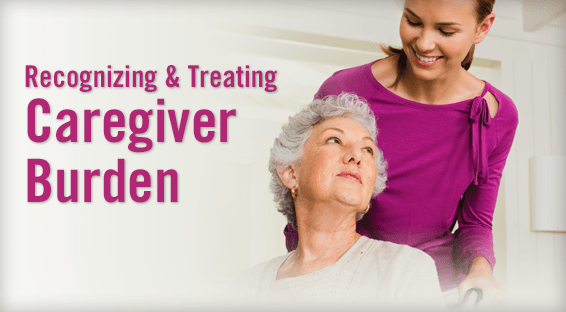Research has shown that unpaid family or informal caregivers provide as much as 90% of the in-home long-term care that is needed by adults. A 2009 study estimated that 65.7 million people in the United States served as unpaid family caregivers to an adult or child, two-thirds of whom provided care for an adult aged 50 or older. “The burden of caring for others is increasing because of our aging population, an increase in the number of people living with chronic disease, and a lack of formal support for caregivers,” says Ronald D. Adelman, MD.
In addition to providing assistance with basic and instrumental activities of daily living and medical support, caregivers also provide emotional support and comfort. The economic burden of informal caregiving is substantial, with a recent study estimating that the cost of informal dementia caregiving was $56,290 annually per patient. Furthermore, many caregivers have little choice in taking on a caregiving role, and many report feeling ill prepared to take on these responsibilities. “Many caregivers are unaware of the toll that caregiving takes on them, making them more vulnerable to other serious health problems,” Dr. Adelman says. “In addition, caregivers often receive inadequate support from health professionals and frequently feel abandoned and unrecognized by the healthcare system.”
Diagnosis & Assessment of Caregiver Burden
In a recent issue of JAMA, Dr. Adelman and colleagues reviewed cohort studies and other analyses to provide strategies to diagnose, assess, and intervene for caregiver burden. Several risk factors for caregiver burden were identified, including female sex, low educational attainment, and residing with care recipients. Depression, social isolation, financial stress, a higher number of hours spent caregiving, and a lack of choice in being a caregiver are other risk factors.
“Clinicians should be vigilant about identifying primary and secondary caregivers and monitor how they’re handling the burden,” Dr. Adelman says. “Unfortunately, acknowledgment and assessment of the health and well-being of caregivers are not routine. Physicians should take more responsibility and play a greater role in assessing caregivers and collaborating with social work colleagues.” He notes that this requires identifying factors that may be causing distress by asking caregivers questions about their physical demands, psychological effects, conflicts, financial stresses, and behavioral issues (Table).
Physicians are also recommended to explore caregivers’ sense of well-being, confidence in abilities to provide care, and needs for additional support. “The key is to have physicians collaborate with their social work colleagues to create comprehensive, individualized care plans to support both care recipients and caregivers,” says Dr. Adelman. He and his colleagues provided several ways to initiate conversation with caregivers. “Educating caregivers about the rewards and difficulties of caregiving is important,” says Dr. Adelman. “Counseling them about their needs for help and support is crucial.” Referrals of caregivers to social workers or community agencies capable of further assessing and providing supportive services are essential.
Interventions to Help Caregivers
In the JAMA clinical review, Dr. Adelman and colleagues also evaluated evidence on interventions intended to avert or mitigate caregiver burden. Certain psychosocial and pharmacologic interventions can have mild to modest effects. Several strategies appear to be especially helpful, including:
• Encouraging caregivers to function as members of the care team.
• Encouraging caregivers to improve self-care and maintain their health.
• Providing education and information.
• Using the support of technology.
• Coordinating and referring for assistance with care.
• Encouraging caregivers to periodically have someone else stay with care recipients for a brief stretch of time.
“These interventions can have a dramatic effect on caregivers and should be offered whenever caregiver burden is identified,” says Dr. Adelman. “Many resources are available online, and clinicians should be prepared to direct caregivers to these resources early in the course of their caregiving. We should also make caregivers aware of the assistance that’s available to them or if they qualify for help.”
Dr. Adelman says that, ultimately, physicians should engage caregivers to be proactive partners in care, be cognizant of caregiver burden, and intervene in a timely manner to help reduce this burden. “By 2030, the number of people aged 65 and older is expected to double,” he says. “Each day in the United States, about 10,000 people are turning 65 years old. Considering the rapid aging of our society, it’s likely that more people will require caregivers and that the prevalence of caregiver burden will increase in years to come. Physicians can be proactive by supporting the well-being and care of these people, even if they’re not necessarily their patients.”




 TimH
TimH